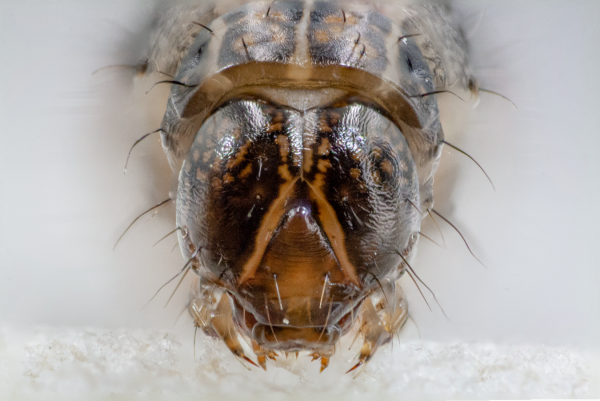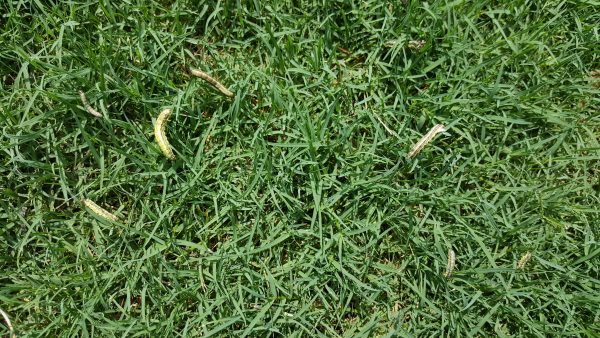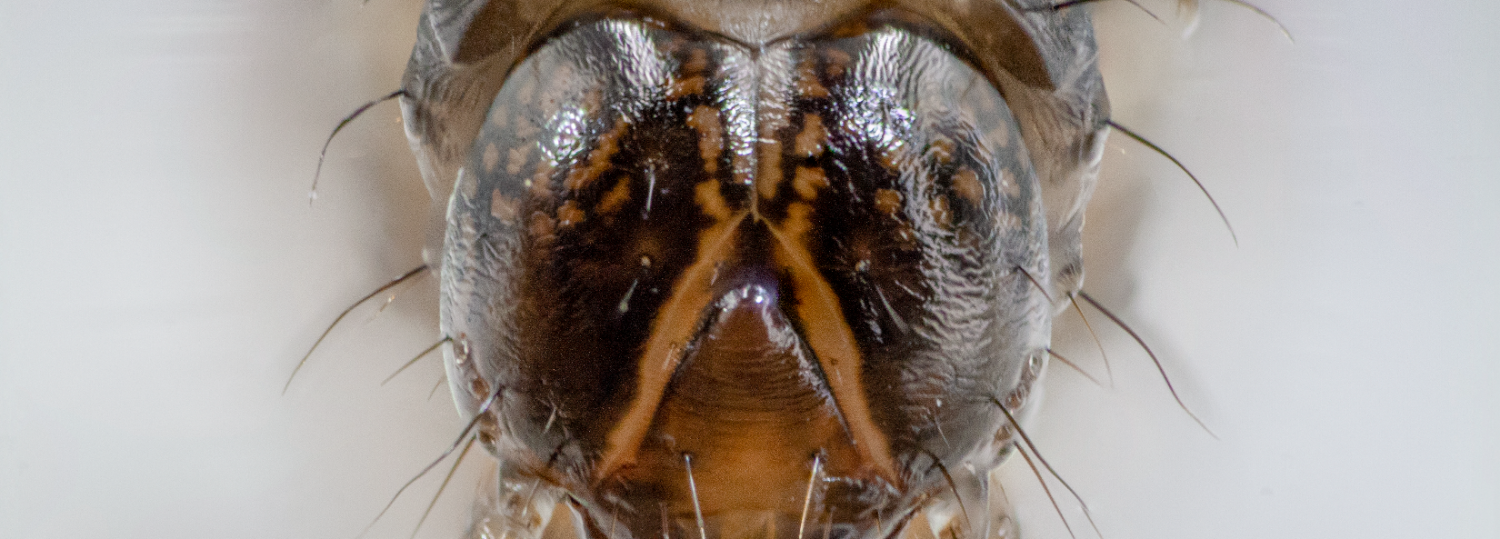We have heard reports of fall armyworm egg masses around homes and buildings in Charlotte, NC. While the timing is earlier than usual (armyworms typically start becoming an issue in July), it is not unheard of to see fall armyworm activity in the month of June. 2018 in North Carolina was a busy year for fall armyworms and although early activity is not an indicator of armyworm potential damage severity, it would be wise to be on the lookout for these insects.
Armyworms have a wide, black stripe running down the side of the body and a light-colored, upside-down “Y” marking on the head capsule. Female moths will lay egg masses on most flat surfaces (walls, signposts, leaves) adjacent to managed turfgrass. One moth can lay as many as 1,000 eggs which will hatch in 2-10 days, depending on the temperature. Unlike many other turf insect species, armyworms are active during the day and can be easily spotted crawling across the turf canopy.
Female moths will lay egg masses on most flat surfaces (walls, signposts, leaves) adjacent to managed turfgrass. One moth can lay as many as 1,000 eggs which will hatch in 2-10 days, depending on the temperature. Unlike many other turf insect species, armyworms are active during the day and can be easily spotted crawling across the turf canopy. Damage is often described as “appearing overnight” so monitoring managed turf areas is important to staying on top of a population.
Damage is often described as “appearing overnight” so monitoring managed turf areas is important to staying on top of a population.
For detailed information and control recommendations, see the Fall Armyworm pest info sheet on Turffiles.
